This post may contain affiliate links. Please read our disclosure policy. As an Amazon Associate, I earn from qualifying purchases.
Homemade pork tamales are a labor of love, but once you bite into that tender masa filled with juicy roasted pork, bold red chile sauce, and gooey Monterey Jack, it’s all worth it.
They’re rich, comforting, and way better than anything you’ll find in the freezer aisle. Make a batch, freeze a few, and suddenly you’re the person everyone wants to know come dinnertime.
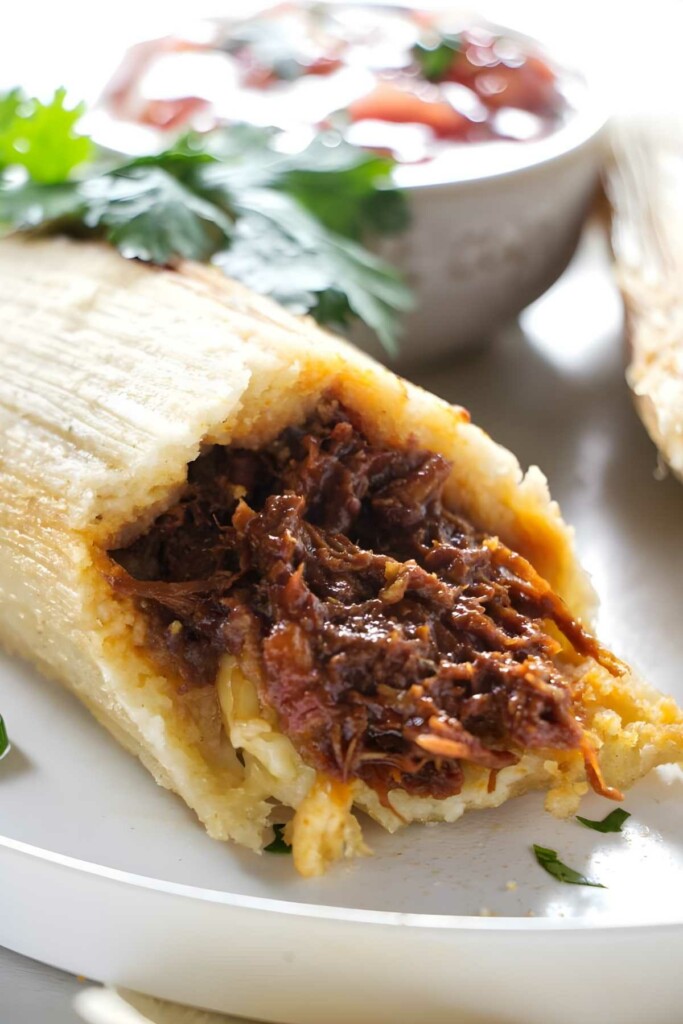
These tamales go well with salsa verde, our molcajete guacamole, or a side of Mexican Street Corn Salad. And if you’ve got a little extra time, a drizzle of homemade mole never hurts.
Here is Why This Homemade Pork Tamales Recipe Works
Slow-roasted pork = flavor bomb: That roasted pork shoulder gets tender, juicy, and totally infused with chile sauce.
Fluffy, rich masa: Whipping the fat and beating the dough gives you that tender, airy tamale texture you dream about.
Cheese surprise: A sneaky slice of Monterey Jack adds a creamy hit that balances the spice and richness.
Meal prep friendly: These tamales freeze well. They are perfect for planning ahead or gifting to your favorite neighbor (or hoarding for yourself, no judgment).

Recipe Tips
Soak the husks well: Give them at least an hour in hot water so they’re pliable and easy to fold.
Whip the fat: Don’t skimp on this step. Light, whipped lard or tallow is the key to fluffy masa.
Test the masa: Do a float test. If it doesn’t float, keep beating.
Spreading the dough: An offset spatula or back of a spoon makes the dough-spreading way less annoying.
Pack them tight but not too tight: Crowding keeps them upright, but overpacking makes them take forever to steam.
Watch your water: That coin trick isn’t just cute, it’s actually helpful. If it stops rattling, you’re running dry.
Don’t skip the resting time: Let the tamales sit for 10 minutes after steaming so they firm up and don’t fall apart when unwrapped.
Taste your masa: Fry a small amount in a hot skillet like a pancake and give it a taste test.
Use extra husks: Line the steamer and cover the tamales with leftover husks to trap steam inside.
See more ways to steam tamales if you don’t have a traditional steamer.
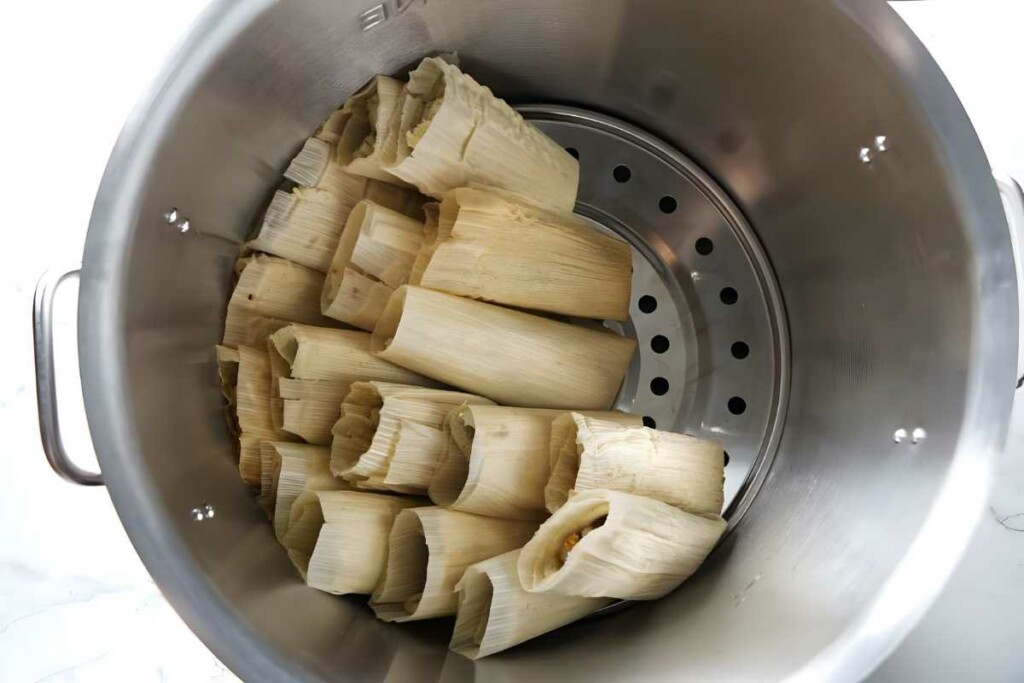
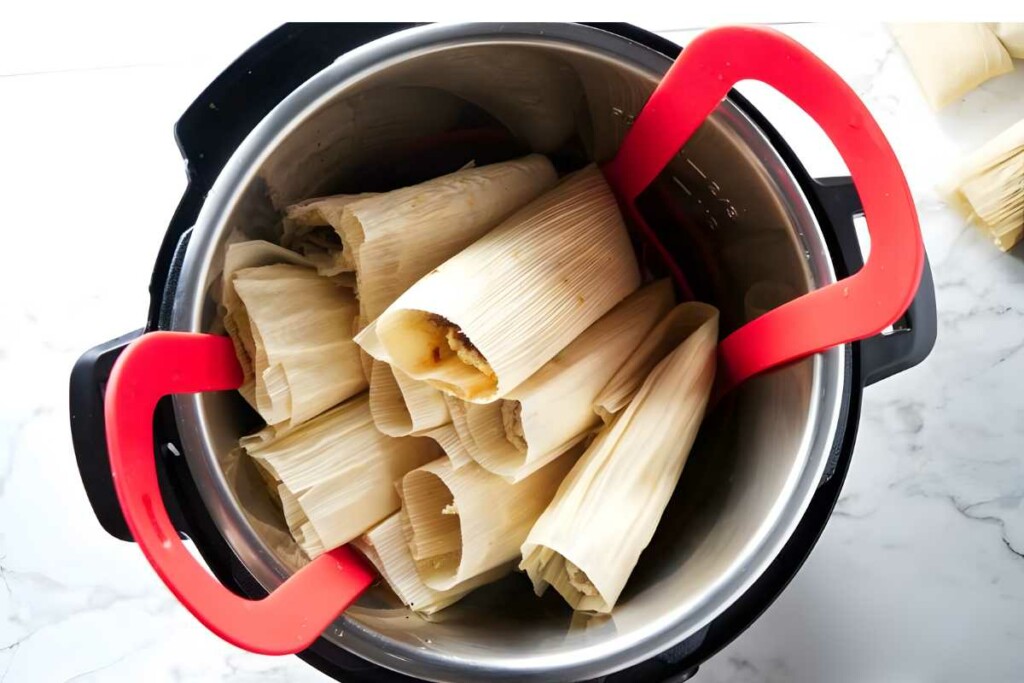
Storing Leftovers
Refrigerate: Store cooled tamales in an airtight container for up to 5 days. Keep the husks on to prevent them from drying out.
Freeze: Wrap each tamal in plastic wrap, then toss them in a freezer-safe bag or container. Freeze for up to 3 months either before or after cooking.
Reheat: Steam refrigerated tamales for 15–20 minutes until heated through. For frozen ones, steam pre-cooked tamales for about 45 minutes. If uncooked, they’ll need 1½ to 2 hours in the steamer.
For more tamale ideas, check out my dessert tamales.
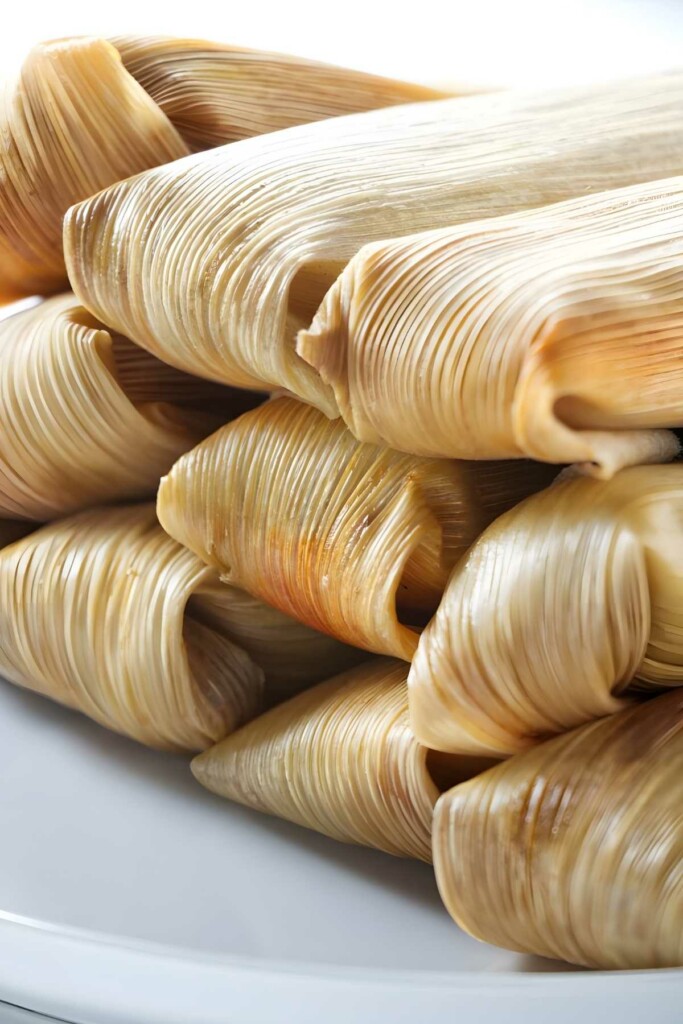
Homemade Tamales with Pork and Red Sauce
Homemade pork tamales are the ultimate slow food flex: packed with flavor, made with love, and totally worth the (messy) kitchen. Once you taste these, you’ll never settle for bland, dry tamales again.
Pin this now to find it later!
Pin It
Pork Tamales Recipe
If you make this recipe, please leave a star rating and comment.
Ingredients
- 30 to 40 corn husks for tamales
Filling
- 1 roasted pork shoulder recipe
- 1 red chile sauce recipe
- 10 ounces Monterey Jack cheese
Masa
- 4 ½ cups instant corn masa flour, masa harina
- 1 ½ teaspoons baking powder
- 1 ½ teaspoons salt
- 1 ½ teaspoons ground cumin
- 1 teaspoon garlic powder
- 1 ½ cups lard, or beef tallow, or butter
- 2 to 3 cups chicken broth
Instructions
- Rinse the corn husks under running water to remove debris and dust.
- Place the corn husks in a large bowl and separate them. Pour hot water over the corn husks and let them soak for at least 1 hour until they are soft. You can leave them in the soaking water while the pork shoulder cooks.

Make the Filling
- Follow the recipes for the roasted pork shoulder and the red chile sauce.
- When the pork shoulder finishes roasting, shred the meat off the bone and place it in a large mixing bowl.
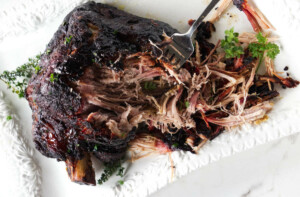
- Pour the red chile sauce over the shredded pork and mix until well combined. Cover the bowl with plastic wrap and set aside.
- Slice the cheese into logs 3-inches long and ¼ inch wide. Place the cheese on a plate, cover it with plastic wrap, and set aside while you make the masa dough.
Make the Masa
- In a medium sized bowl, combine the masa flour, baking powder, salt, cumin, and garlic powder. Set aside.
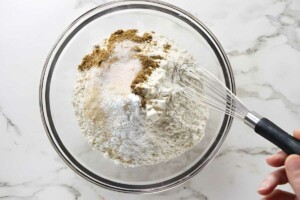
- Place the lard (or fat of choice) in a large mixing bowl. Beat the lard with an electric mixer for 4 to 6 minutes until it is light and fluffy. It should look almost as fluffy as frosting and hold a stiff peak when you lift the whisk.

- Add half of the dry masa mixture into the lard and combine well. Add the rest of the masa flour mixture and combine until the mixture looks dry and crumbly.
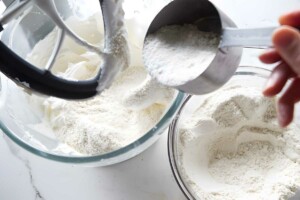
- Add 1 cup of the broth and mix until well incorporated. Continue adding the broth ½ to 1 cup at a time and blend well between additions. The amount of broth you need will vary from batch to batch. Continue to add the broth until the dough looks soft, slightly sticky and spreadable. It should be about the consistency of creamy peanut butter.

- Once you get the masa dough to the consistency of peanut butter, turn the mixer to medium and beat it for about 10 minutes to incorporate air into the batter.
- Test the dough: Drop ½ teaspoon of dough into a glass of cold water. If the dough floats in the water it is ready. If the dough sinks to the bottom of the glass, continue beating for a few more minutes.

- Taste the masa and add more salt if necessary. If you don’t want to taste the raw dough, scoop a couple of tablespoons of dough and fry it in the skillet like a pancake.
- Cover the dough with plastic wrap or a damp towel to prevent it from drying out.
Assemble the Tamales
- Lay a corn husk on the counter with the smooth side up. Place about 3 to 4 tablespoons of dough into the corn husk and spread it on the top two thirds of the husk (don’t spread any dough on the narrow end of the corn husk ). Leave ½ inch of space at the top edge of the husk. See the photos for reference.

- Place about 2 to 3 tablespoons of filling in the center of the dough. Add a slice of cheese next to the filling.

- Fold the sides of the husk toward the center and over the top of the filling.

- Fold the narrow end of the husk up to seal the bottom of the tamal. Place the tamal on a plate and continue to assemble the rest of the tamales.

To Cook on the Stovetop:
- Place about 2 to 3 inches of water in the bottom of a large pot.
- Drop a coin into the water. The coin will jingle when the water boils and let you know if you need to add more water to the pot if it stops jingling.

- Place a steamer basket or a rack in the pot so the tamales stay suspended above the water.
- Arrange the tamales on the rack with the open side facing up. Keep them packed closely together so they all stay in an upright position.
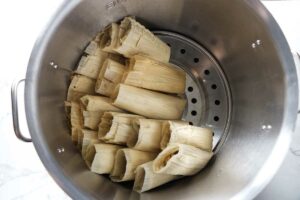
- If you have extra corn husks, spread them out over the top of the tamales to help hold the steam in. If you don’t have extra corn husks, lay a clean towel or parchment paper on top of the tamales. This will help prevent the steam from evaporating as quickly.
- Bring the water to a boil, reduce the heat to a simmer and cover the pot. You won’t be able to see if the water is boiling so watch for steam then place the lid on the pot and reduce the heat to medium low.
- Simmer for 60 to 75 minutes. If the water evaporates out, the coin will stop clinging. Add additional water to the bottom of the pot by pouring it down the side of the pot (do not pour water on top of the tamales).
- Check the tamales to see if they are finished cooking. Remove one tamale and peel the husk off. If the husk pulls away easily and the dough does not stick to the husk, it is finished cooking. If the dough sticks to the corn husk, add 5 to 15 minutes to the cooking time.
- Let the tamales sit at room temperature for 10 minutes so they firm up before serving.
For the Instant Pot:
- You will need to cook the tamales in batches if you use the Instant Pot as it will not fit all of them at once.
- Add 1 cup of water to the inner pot of the Instant Pot and place a rack in the bottom of the pot. Arrange the tamales upright on top of the rack with the open side facing upward. Keep them packed snuggly so they hold each other upright.
- Seal the lid and cook on high pressure for 30 minutes. Let the Instant Pot release pressure naturally for 10 minutes then release the rest of the pressure manually.
Notes
- An offset spatula or a bench scraper makes it easy and quick to spread the dough on the corn husks. You can also use the back of a spoon.
- The baking powder is optional but it will give the tamale dough a lighter, more tender texture.
- Whipping the fat and the batter are key steps to achieving light, tender tamales.
- Make the masa dough slightly sticky and easy to spread on the corn husks. Some cooks like to make the masa almost as thick as play dough, which is also fine but it will take longer to assemble the tamales.
- If the ends of the tamales fall through the steamer rack, spread a few corn husks on top of the rack to prevent the tamales from falling through the gaps.
- The tighter you pack the tamales into the pot, the longer they will need to cook.
- Since the tamales need to steam for a long period of time, you may need to add more water to the pot. If you place a coin in the bottom of the pot, it will rattle in the boiling water. You will know if the pot ran out of water if the coin stops rattling.
- You can freeze the tamales before or after you assemble them. Steam pre-cooked frozen tamales for 45 minutes. If the tamales were not cooked prior to freezing them, steam the frozen un-cooked tamales for 1-1/2 to 2 hours.
Nutrition
Nutrition information is automatically calculated, so should only be used as an approximation.
 Like this recipe? Rate & comment below!
Like this recipe? Rate & comment below!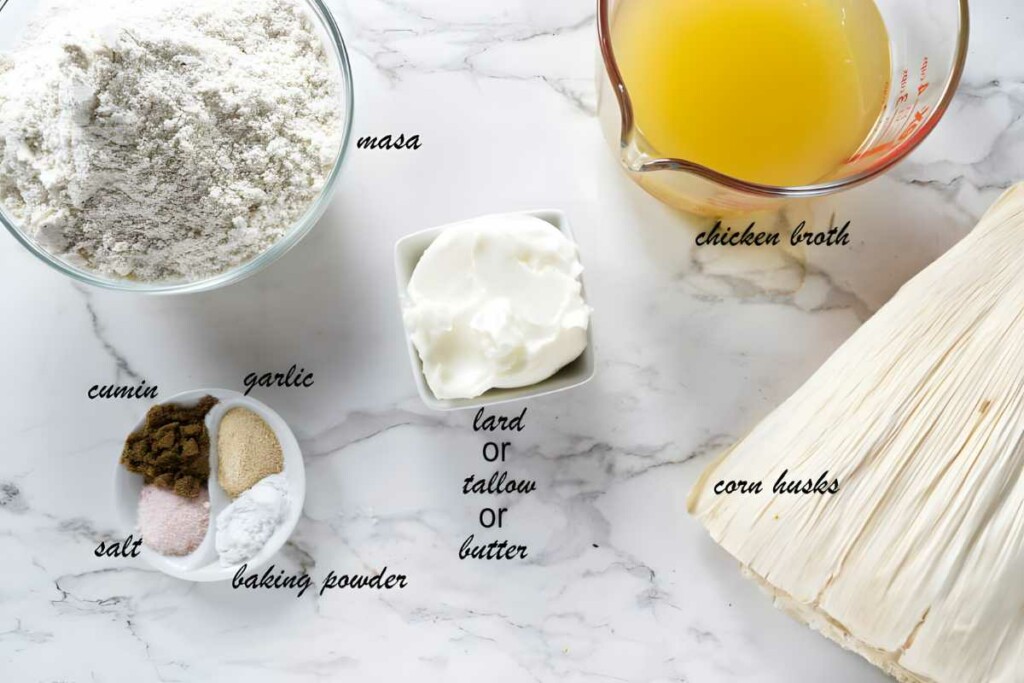
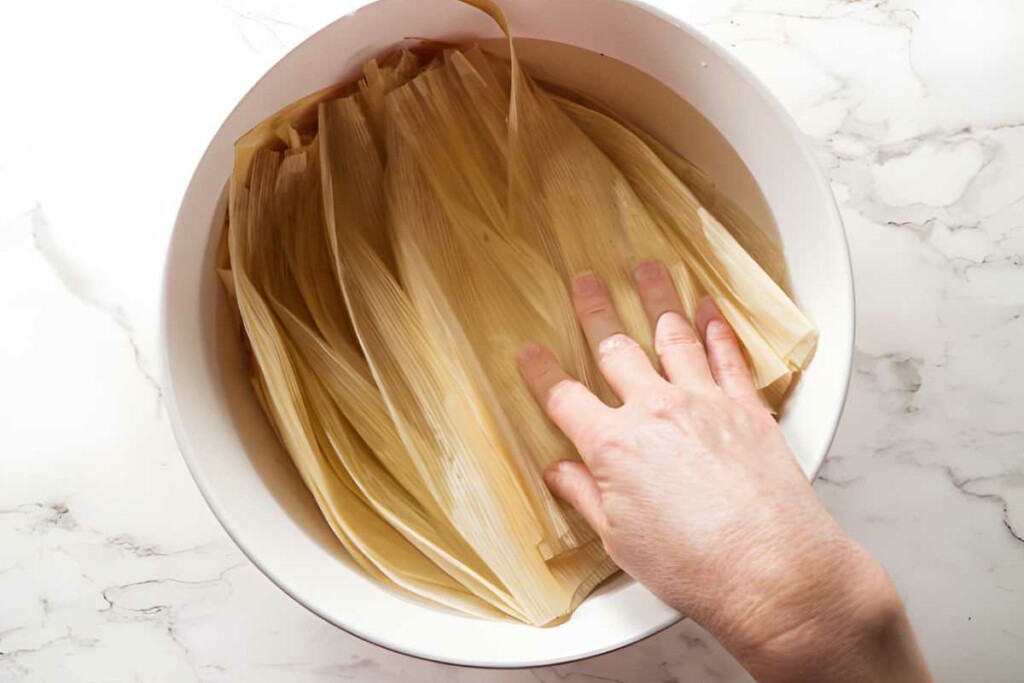
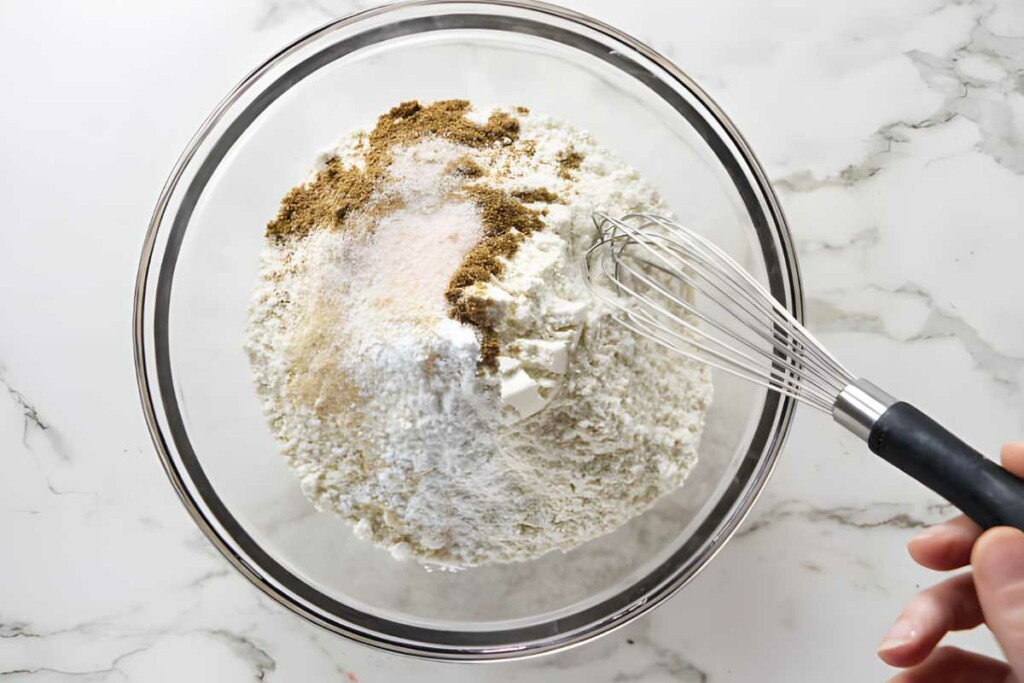
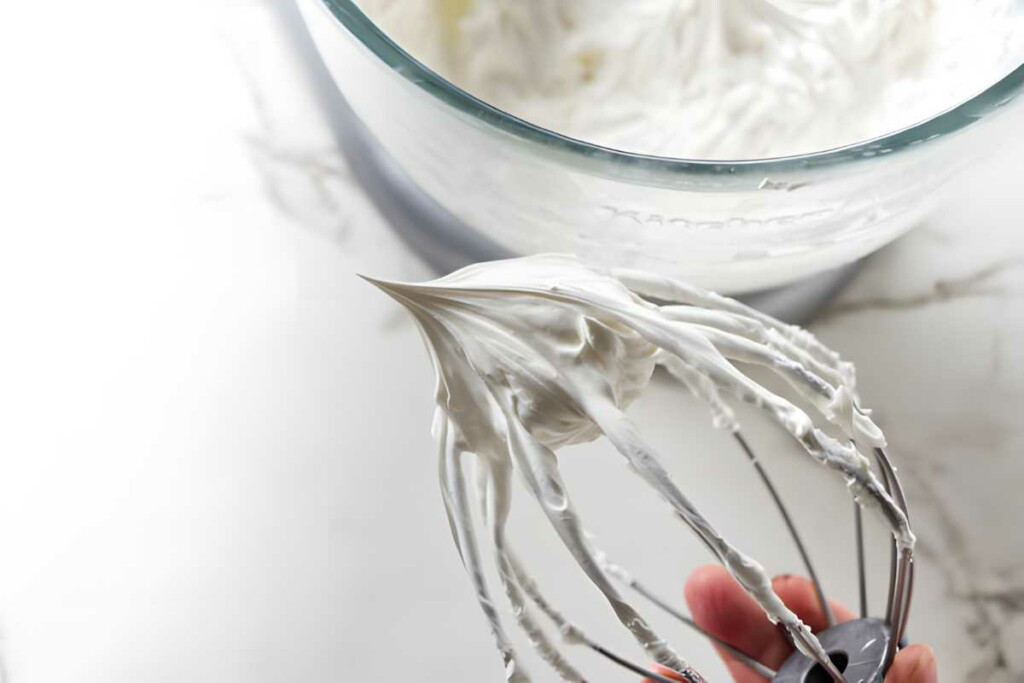
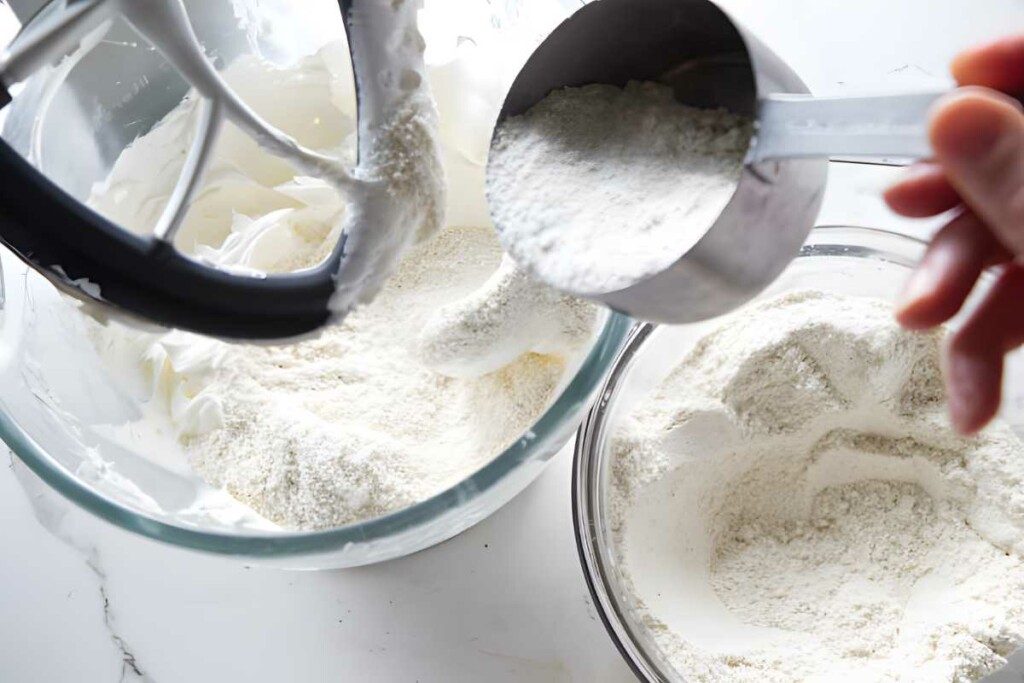
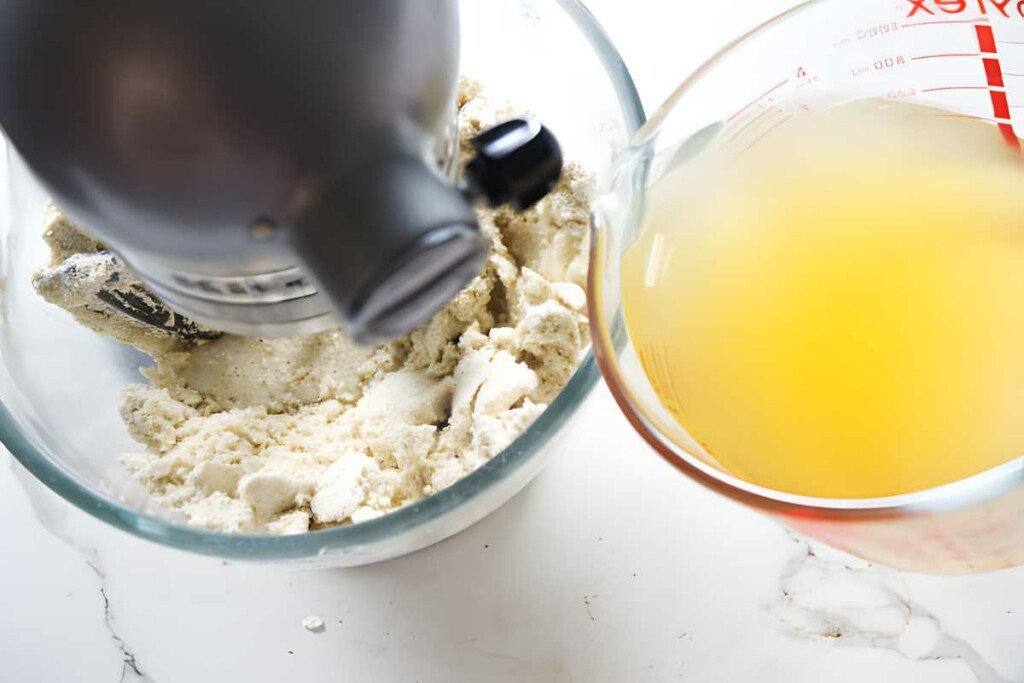
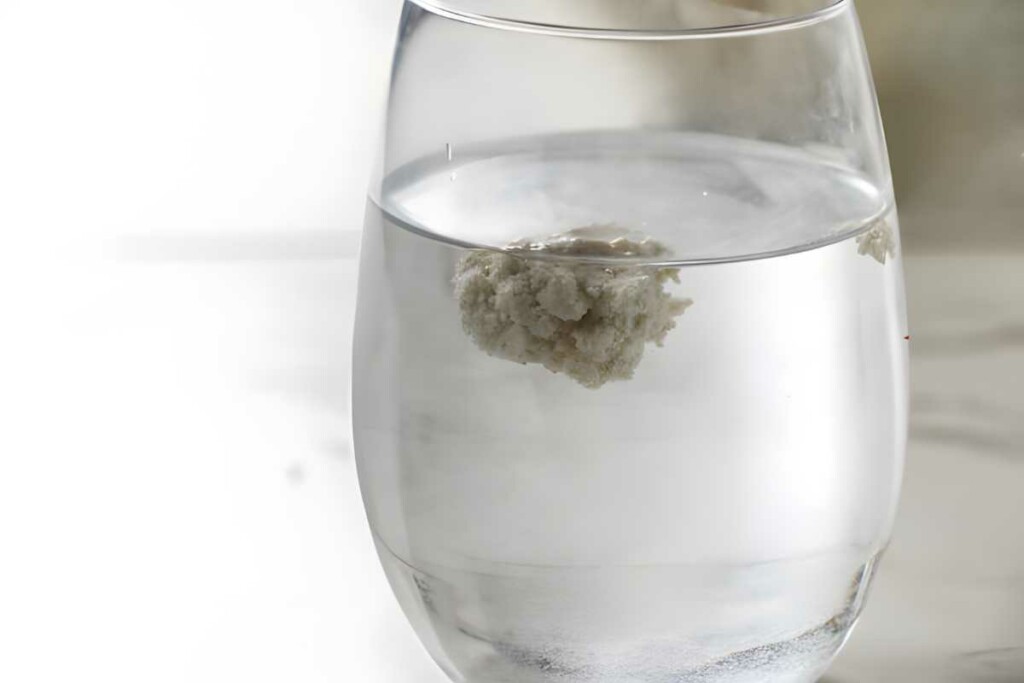
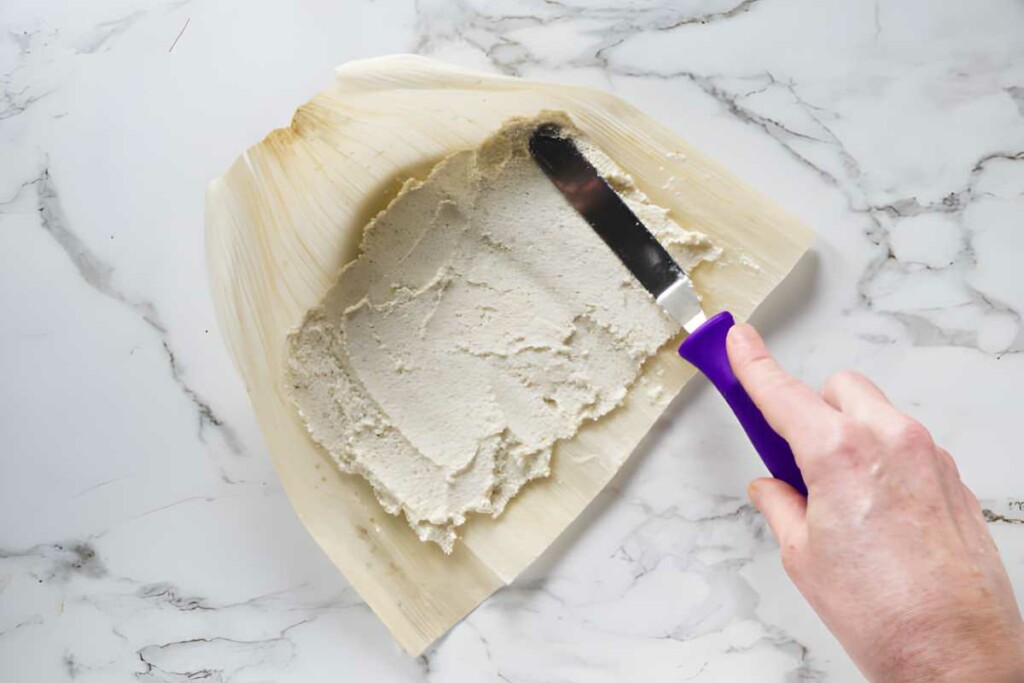
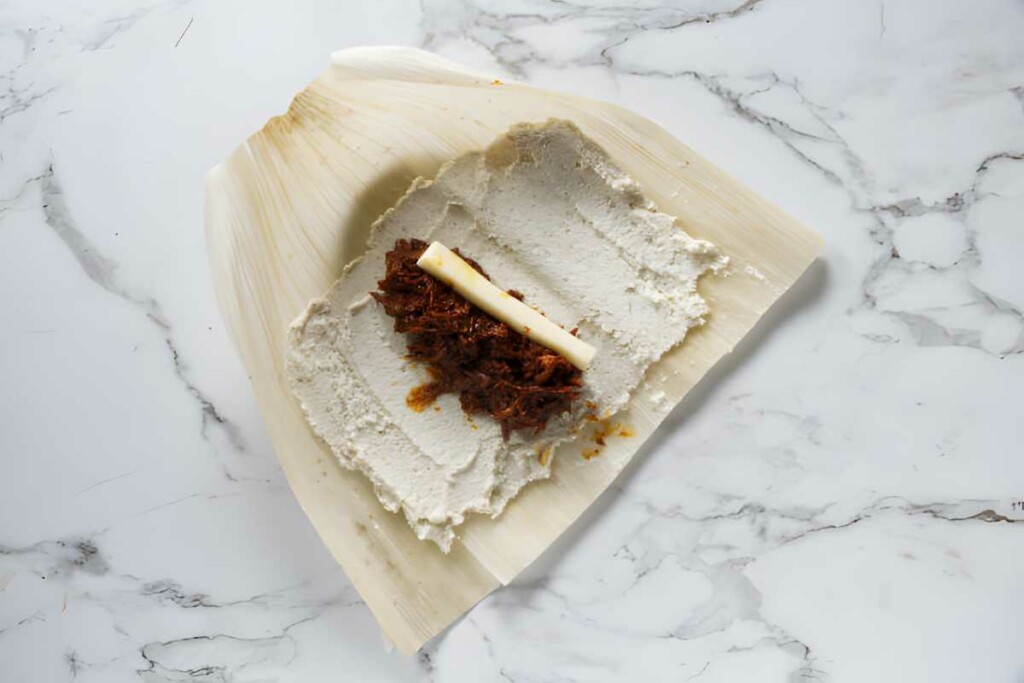
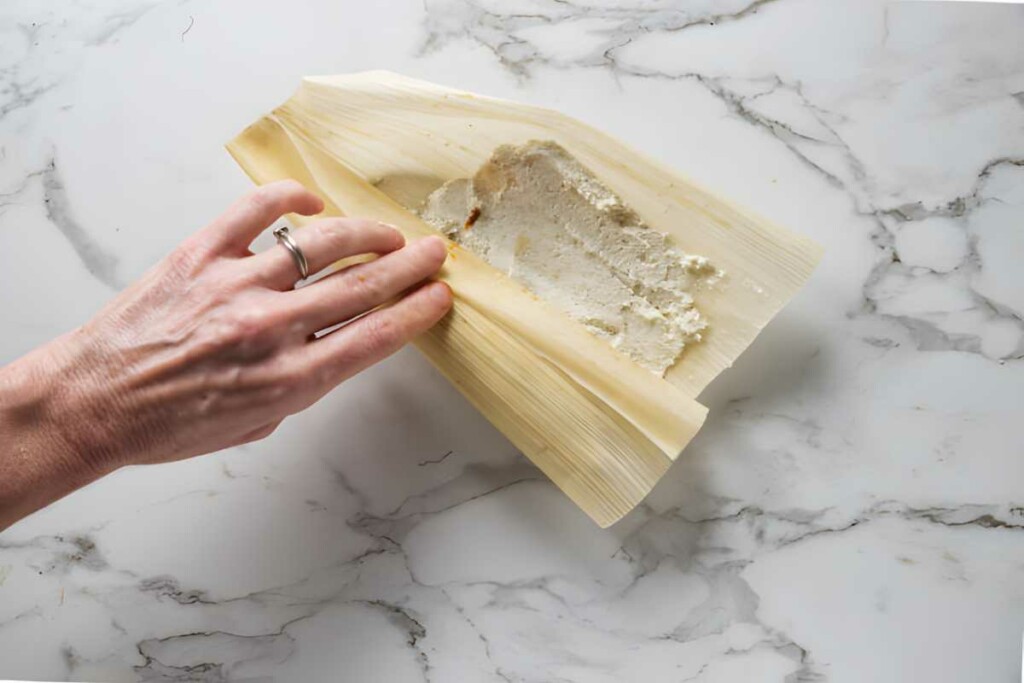
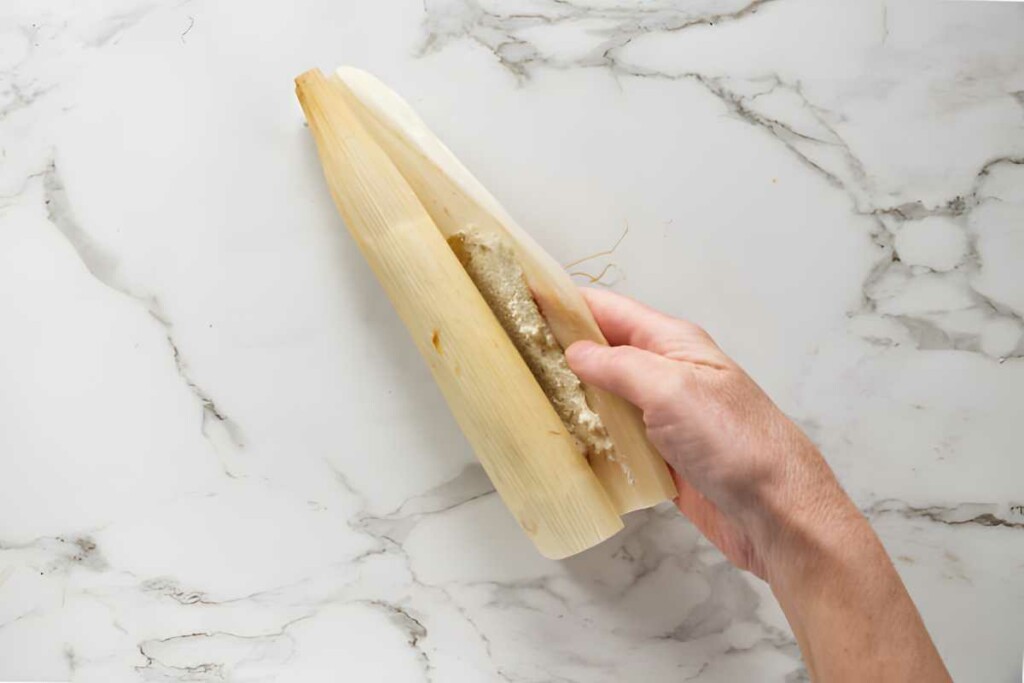
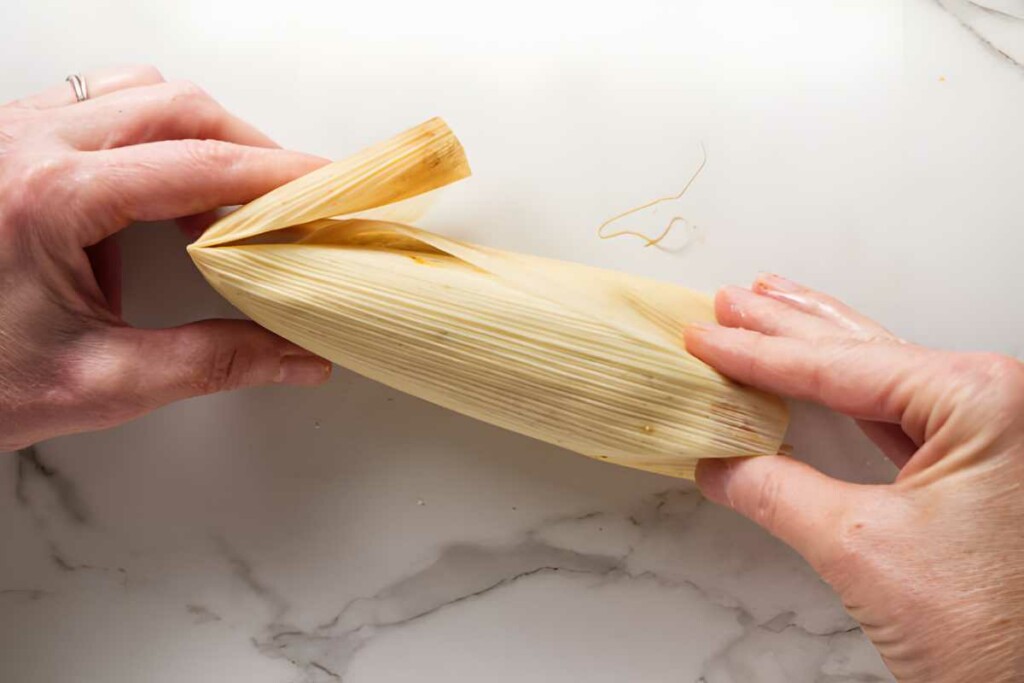
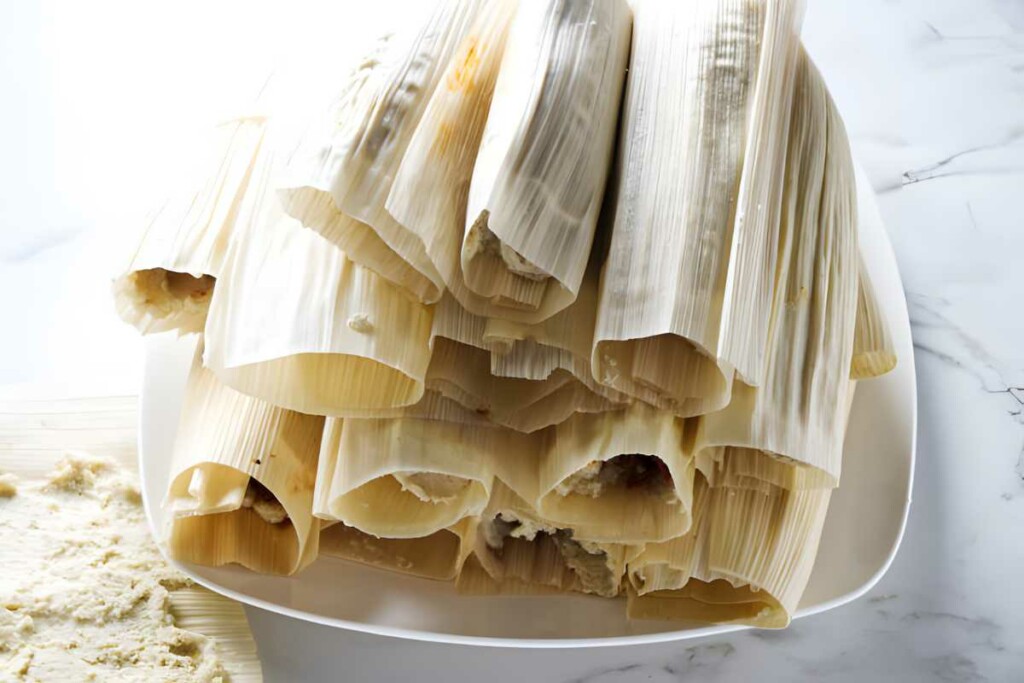
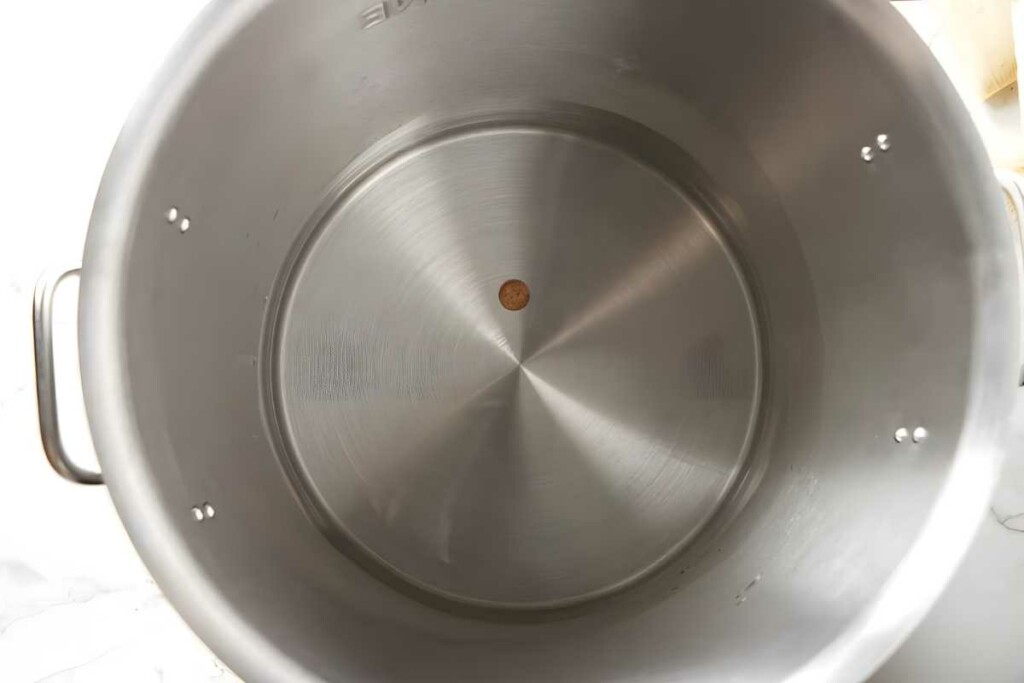
















This past three weeks I’ve made a total of five batches of tamales, Two double batches and one single batch. The last three batches I used your recipe, exactly. (The first double batch I adapted your recipe with prepared masa) I’m so happy with my outcome. Your tamale and especially your masa recipe is the best I’ve ever tried. Spices and seasoning is delicious. Thank you.
Wow, it sounds like you’ve been busy in the kitchen with five batches of tamales; that’s impressive. Thank you so much for your comment, I’m thrilled that you enjoyed the recipe.
I have never had a tamale…it sounds and looks so good with lard and pork filling!
oh, you have to try it, Angie 😉
Love tamales! Been a LONG time since I’ve made them, though — that time thing. But homemade are so darn good. You have me craving a batch, now. 🙂 Terrific post — thanks.
Thanks John